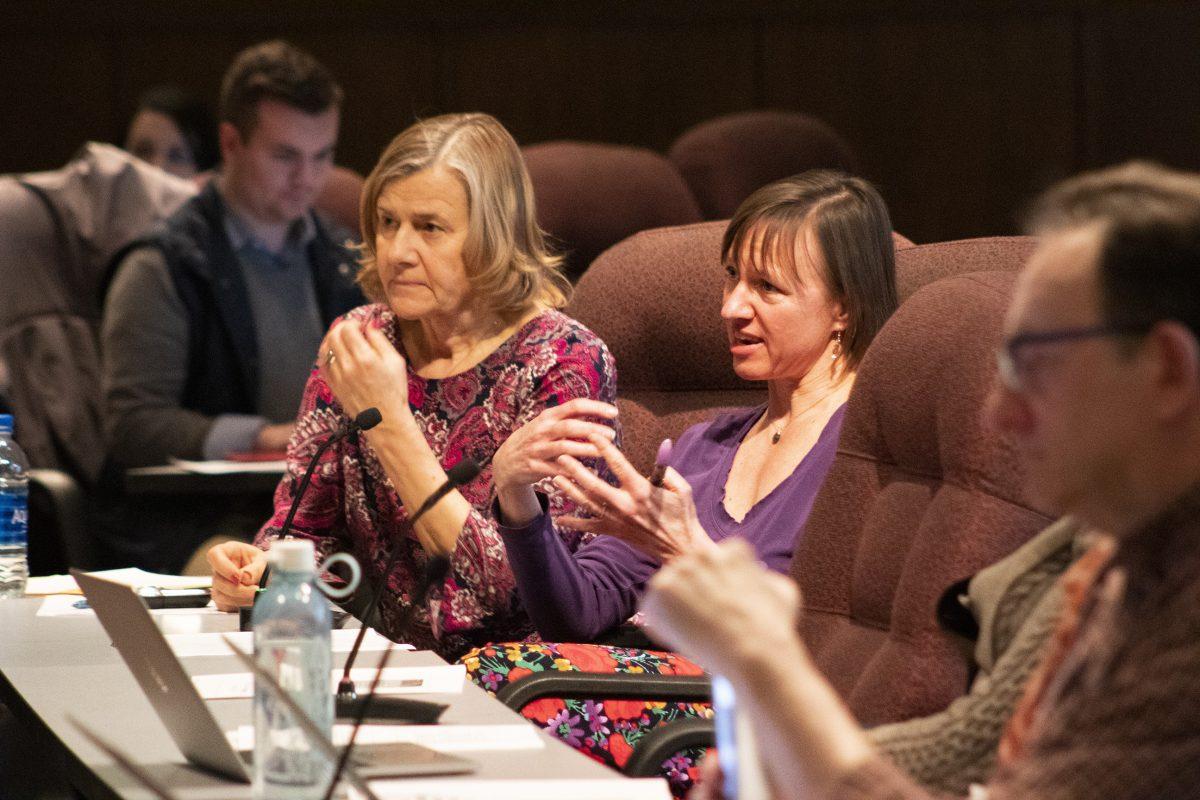Review committee to release recommendations
The Governance Review Committee (GRC) is set to make a final recommendation about changing the university’s governance structure in May.
The committee, which was convened as a result of the recommendations of a 2013 task force commissioned by then University President C. Kevin Gillespie, S.J., first met in the spring of 2016. The committee was charged with evaluating the potential need to refine the current governance structure or adopt a new steering committee model.
Under the current governance structure, mandates are first proposed to the University Council, which is “the principal body for corporate participation of the various constituencies of the university in policy formation,” according to the 2018 Faculty Handbook.
Under a steering committee structure, mandates are instead reviewed by a steering committee, which receives the mandate, reviews it to make sure it is clear and manageable, and then assigns it to a committee.
Once those committee members have researched, created recommendations for and gathered the prescribed input, they write the policy. For higher-level academic issues, the drafted policy goes to Faculty Senate for discussion, any revision and then a vote. The steering committee is ultimately responsible for passing final mandates along to the president for review and approval.
“This puts the committee in the position of researching and gathering input earlier in the process, then taking all of that research and feedback and creating a policy, rather than creating a policy then asking for input from people who may not understand the policy as well as the people who did the research,” said Mary-Elaine Perry, Ed.D., Title IX coordinator and co-chair of the GRC.
Perry said the lack of expertise from those making decisions under the current governance structure slows down the process.
“The people who did the research and likely have the most knowledge about it do not get the final word on what is sent to the president for final approval,” Perry said. “This can take a long time and is not an efficient process.”

Ken Weidner, Ph.D., assistant professor of management and member of the GRC, said the purpose of expanding the levels of input and having it earlier in the process is to prevent the creation of “silos” by identifying early who needs to be included in decision-making processes.
“In our current system, University Council meetings are open to the university community, but the rest of the process that goes on — whether in a standing committee or in an ad hoc committee — is almost without exception a closed-off process,” Weidner said. “Sometimes even when University Council’s discussion included what stakeholders should be consulted by a committee, those were either lost in the process or, in some cases, ignored.”
Weidner said he hopes the new structure allows for more transparency and inclusion in university governance.
“SJU has over 1,000 employees, and the people in our university community have immense talents and valuable and varied perspectives that we don’t fully tap in to and bring to bear on the challenges facing SJU or any modern comprehensive university,” Weidner said. “I think that reforming our governance structure and process can better our odds of success and help us realize an even brighter future than the governance structure and process we have now.”
At a forum concerning the governance change on March 20, several faculty members expressed concern about implementation of the new system, including Ronald Dufresne, Ph.D., associate professor of management and president of Faculty Senate, and Peter Norberg, Ph.D., associate provost for academic and faculty support and professor of English, who was part of the 2013 task force.
“It’s important for us to keep in mind that, no matter what the structure of our system is, the system is only as good as how we use it,” Dufresne said. “It will be up to all of us to be involved, pay attention to the is- sues at hand and make our voices heard.”
Norberg’s primary concern was also about buy-in.
“In order for us to have a truly engaged governance process, we need to have a culture of shared governance, and I’m not sure a structural change is going to change that,” Norberg said.
Even if the proposal isn’t accepted in its entirety, pieces of it can still be used to adapt the current process, Norberg said.
“It’s made us realize that there are practical things that we could do in or- der to streamline things and make things move more smoothly through the governance process,” Norberg said.
Meg Kloss ’19, a University Student Senator, was the student representative on the committee.
“If that steering model passes, then I think it will provide greater representation as well as transparency for students overall because we would be adding students to committees that currently exist within the steering model that are not currently there,” Kloss said. “To see what governance structure is doing, what the steering committee is actually reviewing, is going to create a greater awareness on campus about what is going on policy wise.”
Perry said the committee has scheduled visits with the university’s deans, Administrative Staff Council and Faculty Senate. On March 25, the committee also made a presentation at a meeting of the University Student Senate meeting.
“We are continuing to gather input,” Perry said. “We are meeting as a commit- tee two more times to review the feedback and solidify our recommendations. In early May we will submit our recommendations to University Council for their review. We will recommend an implementation team be formed to work on the implementation of this new structure over the next year for implementation in fall 2020.”
Alex Mark ’20 and Cara Smith ’21 contributed to this article.














































